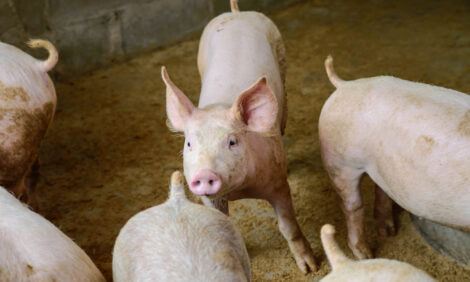



CME: Red Meat Prices Below Year Ago Levels
US - It is interesting looking at the summary table below that despite significant reductions in US meat supplies, red meat prices generally are well below year ago levels, says CME's Daily Livestock Report for 5 June 2009.
Beef production
for the week was down 2.5 per cent but fed steer prices so far are tracking
some 12.7 per cent lower than a year ago, a result of much lower wholesale
prices for beef which have limited the packer’s ability to pay for
cattle. Also important is the sharp decline in the value of hides and
offal. Hide prices continue to suffer from the decline in export demand
as well as smaller hide purchases from US car manufacturers
(leather seats).
Weak cattle prices are also having an impact on cow
calf producers. Feeder cattle prices have declined as feedlots have
become much more cautious in light of weak out-front fed cattle pricing
as well as rising feed costs. So far beef cow slaughter is running
below year ago levels but that may not last for too long. If cow-calf
producers continue to lose money, we could see another wave of liquidation
this fall.
Lean hog prices are currently running some 20 per cent below year
ago levels and cutout values are down some 27.5 per cent. Producers are
bleeding red ink at a time of year when they should be making
money. It seems that the industry has concluded that there is simply
too much production capacity and that prices will remain weak
unless significant steps are taken to reduce the breeding herd.
It
was recently reported that a group of independent hog producers
will undertake a sow herd retirement program, similar to
the dairy cow herd retirement program organized by CWT. It is an
ambitious project but the details are still rather sketchy and we
would like to see more information before making any judgments.
Clearly one of the challenges for any such enterprise is organizing
enough producers to really have an impact. As for the legality of
such a program, we have bee told that the group been advised by
lawyers that the enterprise would be on firm legal grounding but you
never know.
Then there is the free rider problem. When the dairy
coop organized the latest herd retirement program, it concluded that
it needed at least 70 per cent of producers enrolled in order for the program
to go ahead. How many producers will be enrolled in the sow retirement
program and how will those producers that pay into the program
feel when others that do not also reap the benefits? Finally
there is the issue of financing. Some market analysts believe that
the program could generate as much as $50 million that will be used
to buy out sow producers but that is likely a guess and we need more
details to understand the potential impact.








